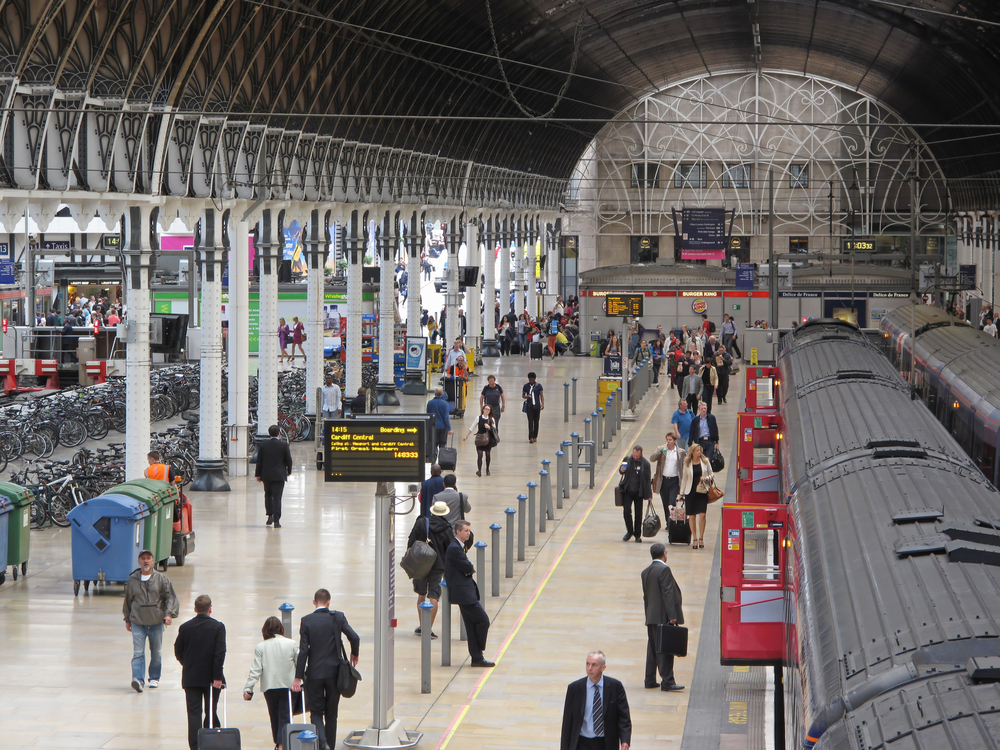Paddington Station air ‘more polluted’ than Marylebone Rd
High numbers of diesel-powered trains at Paddington station may be contributing to poor air quality inside the semi-enclosed building, study suggests
Air quality inside Paddington Station in North West London has been found by a scientific study to be more polluted than at several locations on the busy Marylebone Road nearby.
The results of an air quality evaluation of London Paddington Train Station were published in the Environmental Research Letters journal this week (September 9) and compared to measurements taken by the side of Marylebone Road, which has some of the highest levels of NO2 in the capital.
However, unlike Marylebone Road, which is the receptor used to report air quality levels for the Greater London area for compliance with the EU’s legal air quality legislation, UK rail stations are not required to comply with air quality standards.
Yet, according to the study, enclosed railway stations hosting diesel trains are “at risk of reduced air quality as a result of exhaust emissions that may endanger passengers and workers”.
Paddington was chosen for the study as it serves 38 million passengers annually and hosts a “disproportionate share of the Greater London diesel train fleet”. 70% of trains at semi-enclosed Paddington are powered by diesel engines, compared to the 30% average in Greater London.
The study found no evidence that the area surrounding the station breached air quality standards, but found five instances when NO2 concentrations inside Paddington, the seventh busiest station in the UK, exceeded the EU hourly mean limit for outdoor air quality (200 microgrammes per cubic metre, to be breached on no more than 18 occasions in one year).
Particulate matter (PM2.5), nitrogen oxides (NOx) and sulphur dioxide (SO2) were also monitored at locations in the station in 2012 and compared to the pollution levels by the Marylebone Road 1.2km away, indicating that “train station air quality was more polluted than the nearby roadside”.
The study states: “PM2.5 for at least one measurement location within Paddington Station was shown to be statistically higher than Marylebone on three out of four days. Measured NO2 within Paddington Station was statistically higher than Marylebone on three out of five days, while measured SO2 within Paddington Station was statistically higher than Marylebone on all three days.”
Recommendations
Authors of the study claim that air quality inside Paddington Station has never been directly measured and publically reported, but suggest that if comparable standards to indoor and outdoor were applied at Paddington “action would likely be needed to comply with such standards”.
Authors of the study highlight the adoption of diesel particulate filters on trains, similar to those used on road vehicles, as a possible method of counteracting these emissions, estimating that such catalytic regenerators could decrease particulate emissions by 90%.
However, the authors add that adopting such diesel filters could also increase nitrogen oxides and potentially “exacerbate the already high local NO2 concentrations”.
Another measure, the authors suggest, could be:
“In addition to stricter emissions standards, public exposure to diesel train emissions could be minimised by physically isolating the passenger waiting area with platform screen doors. This solution already exists in underground railway stations.”
The study also notes an ongoing £6 billion effort to modernise and electrify the Great Western Mainline, which is the longest non-electrified line in the UK and for which the terminus is Paddington Station.
But while electrification will eliminate diesel trains and “ultimately improve Paddinton’s air quality”, the project is not expected to be complete until 2018 or possible delayed further.
Since 2006, railway diesel engines have been subject to non-road mobile machinery (NRMM) emission regulations, but the average age of the British rail rolling stock in 2013 was 18 years “implying that most trains were initially deployed 11 years before EU emissions regulations took effect”.
The study concludes: “As a result of the prevalence of diesel trains, lack of indoor regulations, and absence of study, Paddington Station is a meaningful site in which to evaluate potential air quality hazards for UK stations serving diesel trains. Study of train station air quality would provide context for challenges reported at other UK stations such as London Marylebone, Edinburgh Waverley and Birmingham New Street.”
Source:







 Network
Network

